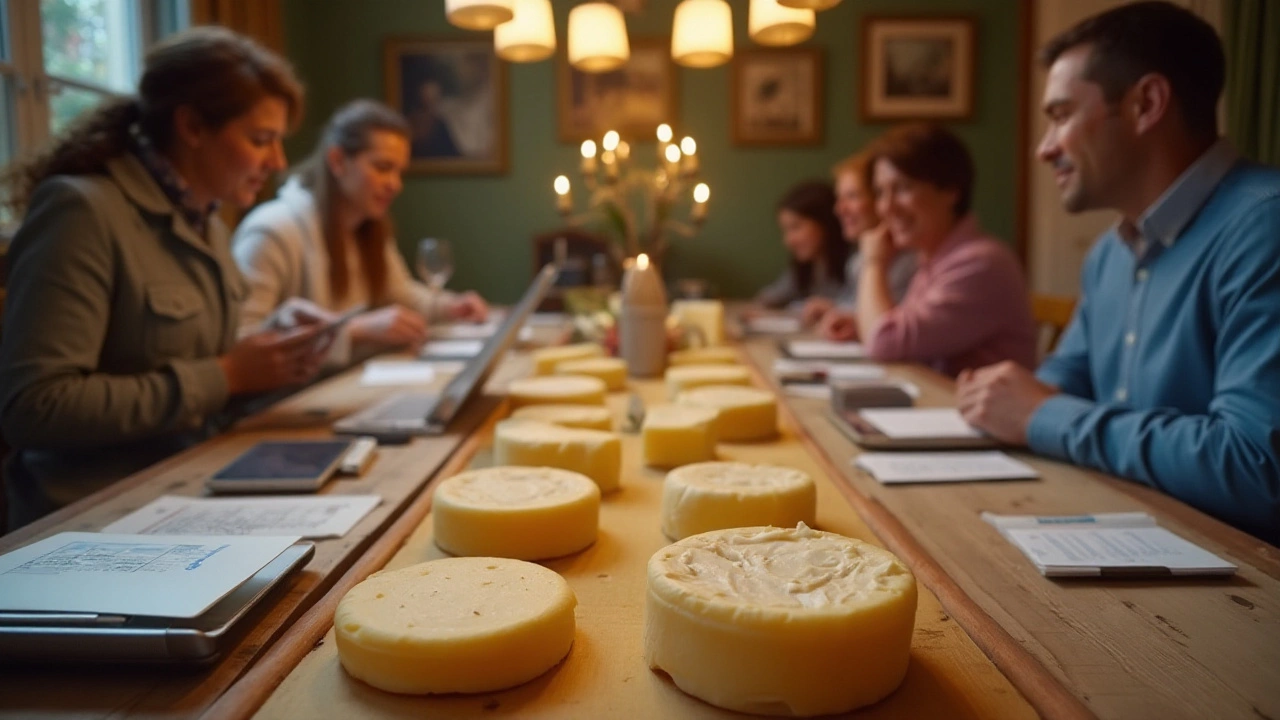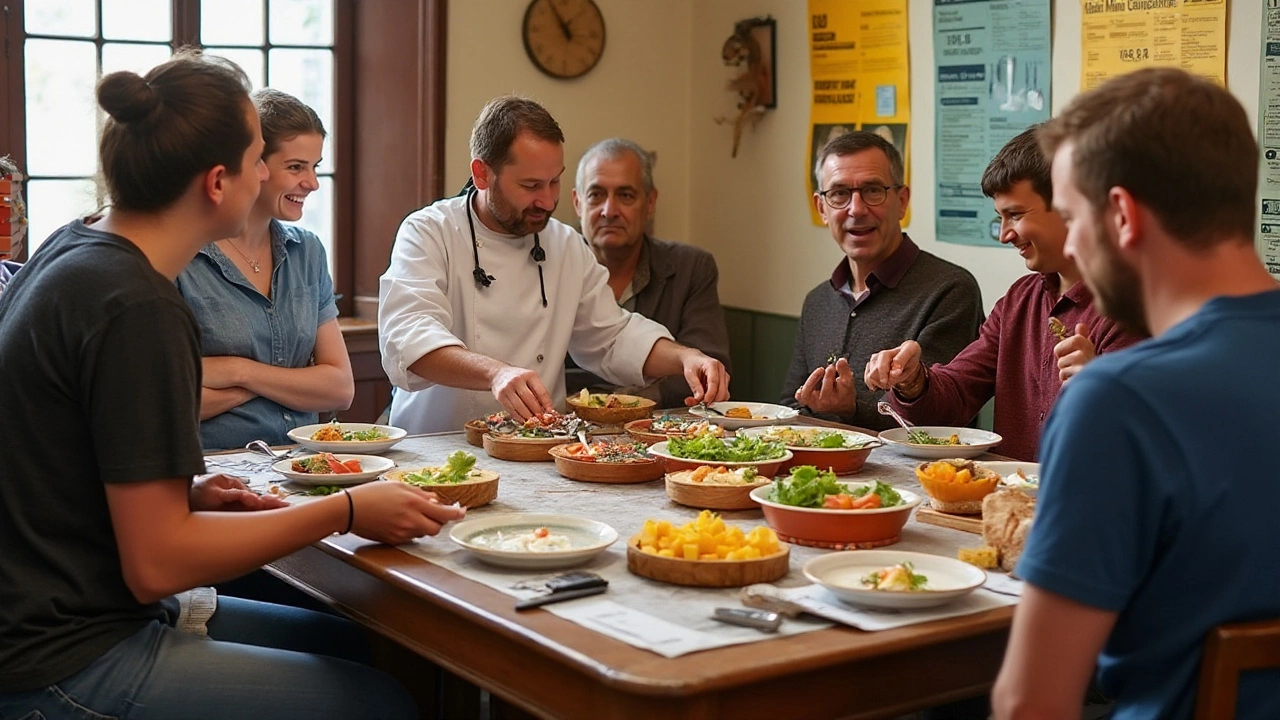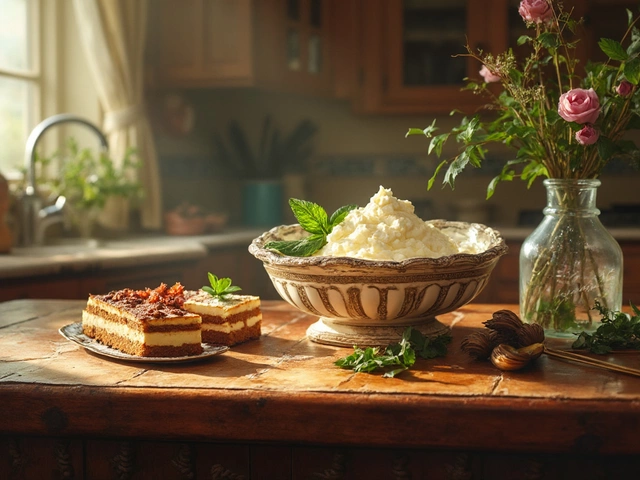Cheese has been a beloved pantry staple for many around the globe, offering a variety of flavors and textures. But when it comes to assessing the fat content, not all cheeses are created equal. This prompts an intriguing showdown between two popular types: the much-loved mozzarella and the versatile Prato cheese.
While mozzarella frequently graces pizzas and salads with its milky smoothness, Prato, with its yellow hue, finds its roots in Brazil. Each carries unique qualities that appeal to different palates. Let's dive into their nutritional profiles to uncover which one holds the title for the highest fat content.
- Nutritional Facts of Mozzarella
- Prato Cheese: Origins and Nutritional Content
- Comparing Mozzarella and Prato Cheese
- Tips for Enjoying Cheese in a Balanced Diet
Nutritional Facts of Mozzarella
Mozzarella, known for its creamy and mild flavor, is a staple in many kitchens and a favorite choice for cheese enthusiasts worldwide. One of the primary reasons mozzarella is so beloved is its relatively lower fat content compared to other cheeses, making it a frequent choice for those mindful of their dietary intake. Typically made from either cow's milk or the traditional buffalo milk, mozzarella comes in various forms—fresh, low-moisture, whole milk, and part-skim. Each variant carries slightly different nutritional elements, offering a range of calories and fat levels that suit different dietary needs. Fresh mozzarella is known for having more moisture and a softer texture, while low-moisture mozzarella commonly finds its place in baked dishes due to its ability to melt perfectly without becoming too greasy.
Per ounce, a typical serving of mozzarella provides around 85 calories, with approximately 6 grams of fat. Of these, about 4 grams are saturated fats, which are often the focus in discussions about healthy eating. Additionally, it provides essential proteins—about 6 grams—making it not only a delightful addition to meals but also a way to bolster protein intake. Mozzarella is a decent source of calcium as well, contributing to healthier bones and teeth. Interestingly, it has less sodium compared to cheeses like cheddar or feta, which makes it a preferable option for those watching their salt consumption.
The cheese does, however, have its varieties that affect its nutritional content. Buffalo mozzarella, significantly adored in Italy, tends to be richer in fats and calories owing to the pure buffalo milk used in its creation. On the other hand, part-skim mozzarella cuts down on the fat, allowing those who wish to reduce fat intake yet love cheese to indulge. There are also vegan options made from nuts and soy that mimic mozzarella's texture and taste while catering to dietary restrictions. It is noteworthy to mention that mozzarella, much like other dairy products, should be consumed in moderate amounts in a balanced diet.
"Mozzarella is one of the best cheeses for pizza because it melts beautifully and provides a savory, soft stretch," notes culinary expert Melissa Clark from The New York Times Cooking section.
When talking about nutritional standards, it's crucial to consider the quality of milk used. Grass-fed and organic milks may alter the nutritional composition of the cheese, often resulting in higher omega-3 fatty acids and more vitamins such as Vitamin D. When incorporating mozzarella into your meals, understanding these elements can guide you in making more informed choices for both health and enjoyment. Mozzarella may also come in reduced-fat options, which cater specifically to those aiming to cut caloric intake without sacrificing the beloved cheese flavor.

Prato Cheese: Origins and Nutritional Content
Prato cheese is one of Brazil's finest culinary treasures, celebrated for its rich, creamy texture and vibrant yellow hue. This delicious cheese traces its roots back to the early 20th century when Danish and Dutch immigrants arrived in Brazil. Seeking to replicate the cheeses of their homeland, they adapted their traditional methods to local conditions and ingredients. The result was Prato cheese, named after its characteristic round or "plate" shape.
Prato is often compared to Gouda and Edam due to its semi-hard consistency and buttery flavor profile. It has quickly gained popularity, not just within Brazil but also in various parts of the world. This versatile cheese pairs well with sandwiches, melts delightfully on burgers, and adds depth to a range of hot dishes. Its nutritional content is worth examining, especially for those trying to monitor their intake of fats.
According to a Brazilian cheese expert, "The unique climate and milk in Brazil contribute to Prato cheese's distinct flavor, making it different yet familiar compared to its European counterparts."
From a nutritional standpoint, Prato cheese is relatively high in fat, boasting approximately 25 grams per 100 grams serving. While this might sound concerning, it's important to remember that these are predominantly healthy fats, which can play an essential role in a balanced diet. Prato also provides a generous helping of protein, with roughly 23 grams per 100 grams, making it a good choice for vegetarians looking to increase their protein intake.
For those concerned with calories, it's useful to note that one serving of Prato cheese, about 28 grams, contains approximately 110 calories. It also presents an impressive array of vitamins and minerals; it's rich in calcium and phosphorus, which support strong bones and teeth. Additionally, it contains zinc and B vitamins such as B12, which aids in maintaining a healthy nervous system.
Balance is key, of course, so if you're indulging in this Brazilian delight, it might be wise to pair it with less fatty meal components, such as fresh vegetables or lean meats. Even though Prato cheese is calorie-dense, the focus should remain on the quality of nutrition it provides.
Making the Most of Prato Cheese
If you've never tasted Prato cheese, you're missing out on a treat that's both comforting and exotic. Those who love to cook will find it melts beautifully, making it ideal for casseroles, hot sandwiches, or simply melting on a steaming bowl of pasta. Its mild, slightly sweet flavor complements various dishes without overpowering them.
Incorporating Prato cheese into your diet can be enjoyable without sacrificing health goals. Opt for smaller portions, appreciate it sparingly on a cheese platter, or as a delectable accent to your favorite recipes. Remember, even while savoring this rich cheese, there are ways to enjoy its pleasures responsibly.

Comparing Mozzarella and Prato Cheese
As we explore the delightful world of cheese, one of the ongoing debates is the difference in fat content between mozzarella and Prato cheese. Begin by understanding mozzarella, renowned for its soft consistency and mildly creamy flavor, often used fresh. Its composition varies based on the milk used, often cow or buffalo, affecting its fat percentage. On average, mozzarella contains approximately 20-23% fat, with buffalo mozzarella slightly higher due to the richer milk. This makes it a somewhat forgiving cheese for the health-conscious, with its protein-rich and lower sodium content compared to others.
Prato, on the other hand, is a staple in Brazilian cuisine, known for its semi-hard texture and yellow tint, reminiscent of Dutch edam. Originating in Portugal but refined in Brazil, it possesses a unique buttery taste that complements sandwiches and baked dishes. Its fat content is generally higher, averaging between 25-28%, partly due to its maturation process which enhances its texture and flavor density. Many Brazilians have integrated it into daily meals, making it a beloved choice despite the richer fat content.
When comparing the two, consider how they can transform a dish. Mozzarella, with its stretchy melt, is indispensable in classical Italian cooking, elevating pizzas and caprese salads. It integrates seamlessly without overpowering other flavors, ideal for recipes seeking balanced touches. Prato cheese, distinct in its creaminess, offers a delightful counterpart to meats or as part of a cheese board. It's essential in Brazilian cuias, paired beautifully with guava paste.
"Cheese is milk's leap towards immortality," noted the famed Clifton Fadiman, emphasizing the magic each type of cheese brings to culinary creations.
Each of these cheeses can be enjoyed as part of a healthy diet, keeping moderation in mind. For instance, a savory Prato cheese sandwich can be offset by including leafy greens and tomatoes, balancing the meal. With mozzarella, combining it with fresh tomatoes and basil in a salad maximizes its nutritious potential. While indulging, one can savor the distinct qualities of each cheese, celebrating them for the unique richness and flavor profiles they contribute to meals worldwide.

Tips for Enjoying Cheese in a Balanced Diet
Cheese, with its rich array of flavors and textures, tempts many of us to indulge. Yet, incorporating it into a balanced diet requires a bit of mindfulness. Understanding the nutritional contents of your favorite cheeses, like mozzarella and prato cheese, is an essential first step in making diet-friendly decisions. Mozzarella, known for its creamy texture, boasts a slightly lower fat content compared to the denser, yellow-hued Prato. Knowing this can help you adjust portion sizes to satisfy cravings without overwhelming your meal with fats.
Prato cheese, hailing from Brazil, can add flavor and excitement to simple dishes. Just a slice can transform plain sandwiches into gourmet delights. However, if you aim to maintain a low-fat intake, moderation is key. Pairing cheese with fresh vegetables and whole grains is a strategic way to enjoy it while ensuring your meal stays balanced. Nutrient-rich plants provide fiber and vitamins that complement the calorie-dense nature of cheese. This keeps your energy steady and your meal satisfying.
Creating a balanced meal doesn’t mean skimping on flavor. In fact, cheese can act as a fantastic source of protein and calcium, supporting muscle and bone health. To maximize these benefits without the added fats, consider using cheese as a flavoring agent rather than the main component. Sprinkling mozzarella over a large salad or melting a thin layer of prato cheese atop grilled vegetables can provide the familiar cheese taste you love, with less impact on your daily caloric intake.
"Cheese is a great addition to a balanced diet when consumed in moderation," says nutrition expert Dr. Emily Lopez. "Opt for smaller portions and pair with fruits, nuts, or whole grains to enhance not only the flavor but also the nutritional value of your meal."
Moreover, keeping track of portion sizes can be greatly beneficial. Serving sizes often get exaggerated, primarily because cheese tastes so delightful. To counter this, opt for pre-measured cheese options or use a kitchen scale to keep servings accurate. Additionally, cheese labels provide valuable information about fat content per serving, allowing informed choices when adding cheese to your diet.
For some, dairy may pose digestive challenges due to lactose intolerance. In such cases, lactose-free or dairy-alternative cheeses can serve as wonderful substitutes without compromising flavor. These options often maintain the rich rewards of cheese flavor, minus the discomfort some may experience post-consumption. With attention to these details, integrating cheese into a well-rounded diet can be both delicious and health conscious.





